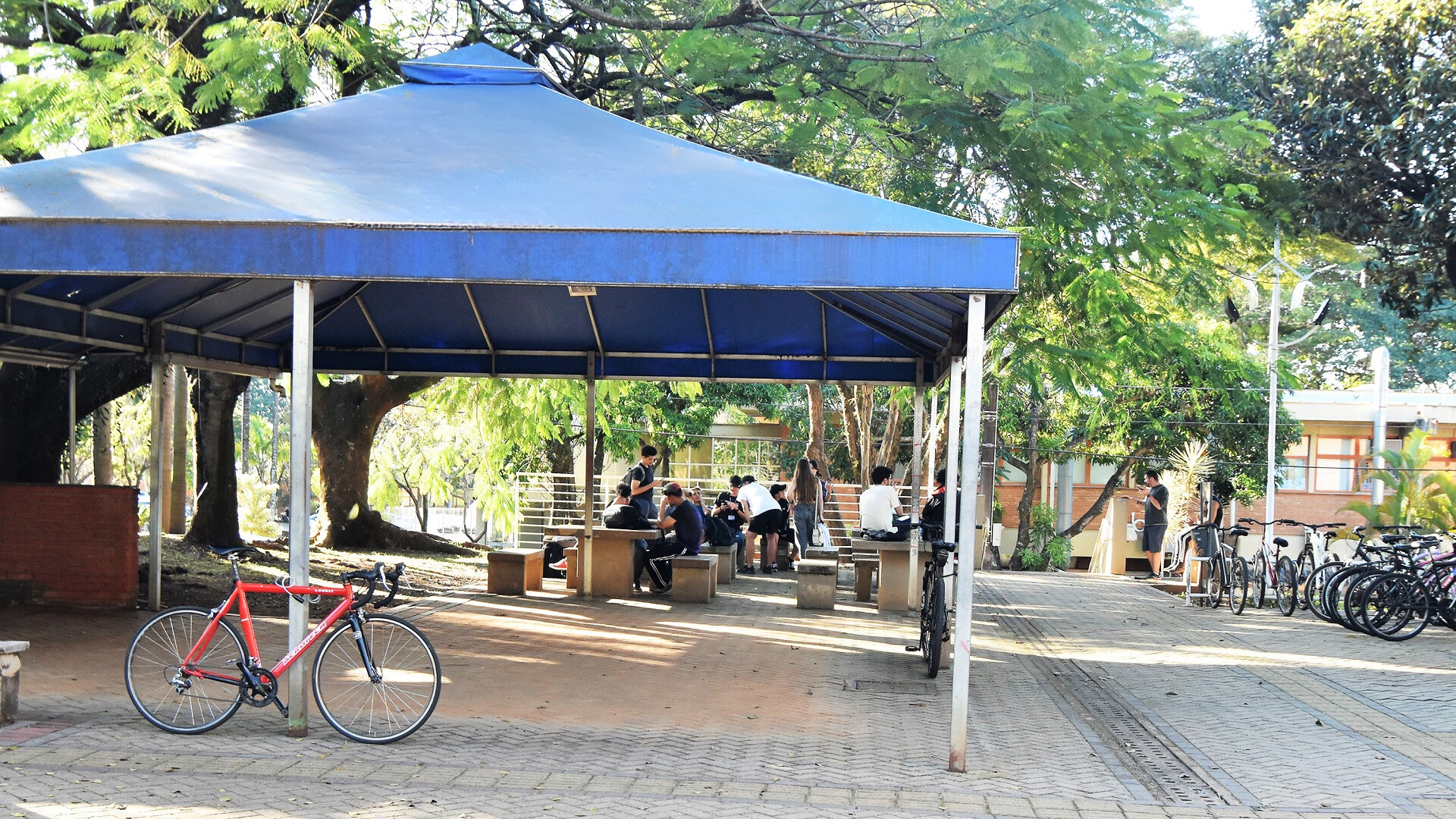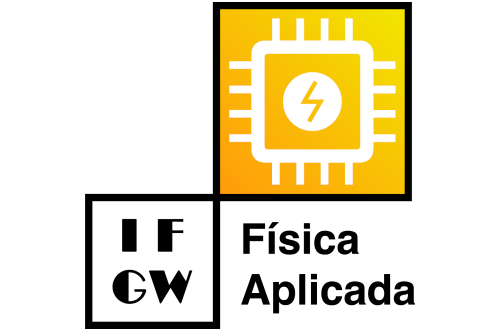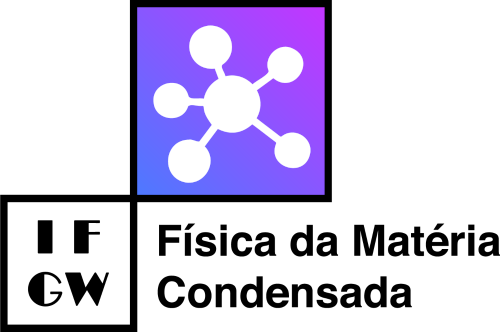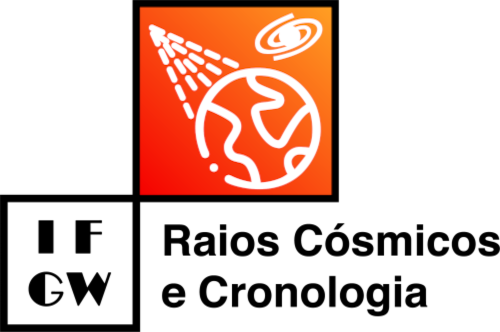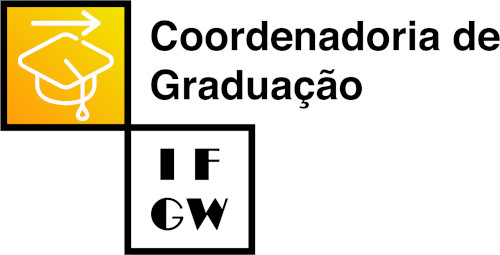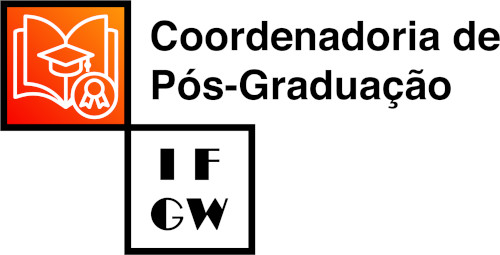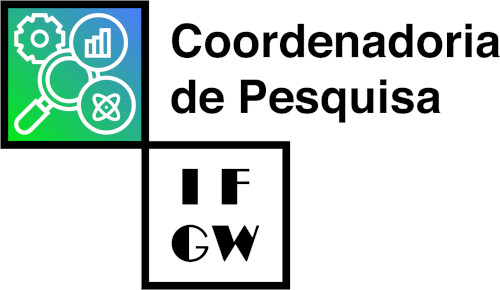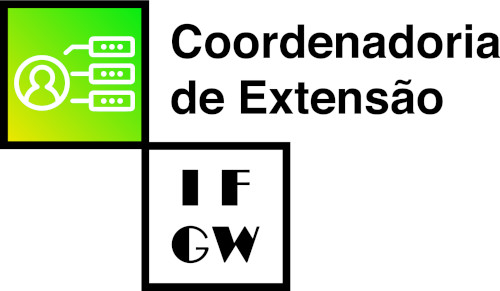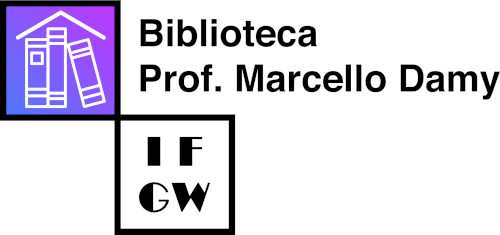Colóquio da Pós-graduação - SCES Webinar Series:Título: Quantum Criticality of Magnetic Field Induced Order in a Correlated Dirac Semimetal Palestrante: Dr. Yasuhiro Tada (Institute for Solid State Physics, University of Tokyo - Japan) Data: 10/12/2020 Clique aqui para assistir a apresentação. Recently, there have emerged various candidate materials of strongly correlated Dirac semimetals. Theoretically, it is known that such Dirac semimetals can show characteristic quantum criticalities which are distinct from the conventional criticalities of bosonic order parameters. Furthermore, the Landau quantization can enhance the symmetry breaking in presence of a magnetic field, which is called magnetic catalysis. In this study, we investigate quantum criticality of the magnetic-field-induced charge density wave (CDW) order in a simple model of correlated spinless Dirac fermions at zero temperature as a prototypical example of the magnetic catalysis, by using the infinite density matrix renormalization group. It is found that the CDW order parameter M(B) exhibits an anomalous magnetic field (B) scaling behavior characteristic of the (2+1)-dimensional chiral Ising universality class near the quantum critical point, which leads to a strong enhancement of M(B) compared with a mean-field result. We also establish a global phase diagram in the interaction-magnetic field plane for the fermionic quantum criticality. |
Colóquio da Pós-graduação - SCES Webinar Series:Título: Stabilizing Even-Parity Chiral Superconductivity in Sr2RuO4 Palestrante: Dra. Aline Ramires (Paul Scherrer Institute, Switzerland) Data: 10/12/2020 Clique aqui para assistir a apresentação. Strontium ruthenate (Sr2RuO4) has long been thought to host a spin-triplet chiral p-wave superconducting state. However, the singlet-like response observed in recent spin-susceptibility measurements casts serious doubts on this pairing state. Together with the evidence for broken time-reversal symmetry and a jump in the shear modulus c66 at the superconducting transition temperature, the available experiments point towards an even-parity chiral superconductor with kz(kx ± iky)-like Eg symmetry, which has consistently been dismissed based on the quasi-two-dimensional electronic structure of Sr2RuO4. Here, we show how the orbital degree of freedom can encode the two-component nature of the Eg order parameter, allowing for a local orbital-antisymmetric spin-triplet state that can be stabilized by on-site Hund’s coupling. We find that this exotic Eg state can be energetically stable once a complete, realistic three-dimensional model is considered, within which momentum-dependent spin-orbit coupling terms are key. |
Colóquio da Pós-graduação:Título: Prêmio Nobel de 2020: Física de Buracos Negros Palestrante: Prof. Alberto Saa (IMECC/Unicamp) Data: 19/11/2020 Clique aqui para assistir a apresentação. O prêmio Nobel de Física de 2020 vem coroar o que já se denomina como a nova "era áurea" dos buracos negros, certamente uma das previsões mais fascinantes da Relatividade Geral de A. Einstein. Neste colóquio, será feita uma rapidíssima revisão da história da Física de Buracos Negros, desde seus primórdios há mais de 100 anos atrás, passando, obviamente, pelos avanços teóricos dos anos 60 que garantiram a R. Penrose 50% do Prêmio, até chegarmos finalmente às notáveis observações diretas mais recentes, destacando-se os trabalhos de Reinhard Genzel e Andrea Ghez sobre o buraco negro no centro da nossa Via Láctea, os quais lhes garantiram a outra metade do Prêmio Nobel, e a já famosa "fotografia" do buraco negro na galáxia Messier 87, a incríveis 53 milhões de anos luz do nosso planeta Terra, obtida pelo consórcio Event Horizon Telescope (EHT). Todos esses pontos serão discutidos de maneira clara e mais elementar possível, na esperança de que todos possam apreciar esses fantásticos resultado nesta nossa época realmente notável para a Física. |
Colóquio da Pós-graduação - SCES Webinar Series:Título: Structural Complexity in CeIrIn5 and CeCoIn5 Palestrante: Steffen Wirth (Max-Planck Institute for Chemical Physics of Solids, Dresden, Germany) Data: 12/11/2020 Clique aqui para assistir a apresentação. Não há resumo para essa apresentação |
Colóquio da Pós-graduação - SCES Webinar Series:Título: What Can We Learn from the 218s? Palestrante: Cris Adriano (IFGW/Unicamp - Brazil) Data: 12/11/2020 Clique aqui para assistir a apresentação. Não há resumo para essa apresentação |
Colóquio da Pós-graduação - SCES Webinar Series:Título: Kondo Nano-Structures and Lattices: Quantum Monte Carlo Studies Palestrante: Fakher Assaad (University of Wurzburg, Germany) Data: 12/11/2020 Clique aqui para assistir a apresentação. Não há resumo para essa apresentação |
Colóquio da Pós-graduação - SCES Webinar Series:Título: The 115 Superconductors: Window on a New World of Quantum Materials Palestrante: Piers Coleman (Center for Materials Theory Rutgers University) Data: 12/11/2020 Clique aqui para assistir a apresentação. Twenty years ago, moving from CeIn3, to CeRhin5, CeCoIn5, CeIrIn5 to PuCoGa5, the quantum materials community succeeded in driving up the superconducting transition temperature by a factor of a hundred, from 0.1K to 18.5K. This is a dream that our field longs to replicate in other families of quantum materials, but we are still lacking key pieces of the puzzle to enable a next leap. In the meantime, these miniature high temperature superconductors have proven themselves to be a vital work-horse for studying the same combinations of d-wave pairing, strange metal and quantum criticality that feature at much higher temperatures in their transition metal cousins. I will discuss the theoretical puzzles raised by these superconductors, reviewing both the theoretical progress, and the key questions - the nature of the strange metal, the quantum criticality and the curious relationship between Kondo, antiferromagnetic and superconducting entanglement, emphasizing the wide-open opportunities for new conceptual understanding in this vibrant area of research. Work supported by NSF grant DMR-1830707. |
Colóquio da Pós-graduação:Título: Neutrinos em 2020 Palestrante: Prof. Pedro Accioly Nogueira Machado (Theoretical Physics Department - Fermi National Accelerator Laboratory) Data: 26/10/2020 Clique aqui para assistir a apresentação. Nesse colóquio farei uma breve introdução aos neutrinos no modelo padrão. Discutiremos como os neutrino oscilam, como são produzidos, e como são detectados. Abordarei o que sabemos sobre neutrinos e seus problemas em aberto. Entre os problemas em aberto, enfatizarei a origem das massas, a natureza Dirac/Majorana, algumas anomalias experimentais ainda não compreendidas e, se houver tempo, possíveis conexões com matéria escura. |
Colóquio da Pós-graduação:Título: Neutrinos e a Busca por Física Além do Modelo Padrão Palestrante: Dr. Pedro Pasquini (JiaoTong University, Shanghai) Data: 09/10/2020 Clique aqui para assistir a apresentação. Os neutrinos foram propostos por Pauli em 1930 através de uma carta na qual ele afirma "Essa é uma ideia que eu não ouso publicar", pois era uma partícula impensavelmente difícil de se detectar. Hoje, 90 anos depois, os neutrinos já renderam mais de 5 prêmios Nóbel e tomam um papel central na física de partículas de fronteira. Mas o que uma partícula já tão estudada pode trazer de novo? Uma das poucas evidências de física além do modelo padrão: A sua massa! É através dela que podemos explorar fenômenos que não podem ser alcançados por grandes aceleradores, mas podem ajudar a resolver problemas em aberto tanto na física de baixas e altas energias e ajudar até a entender o universo primordial. |
Colóquio da Pós-graduação - SCES Webinar Series:Título: Reentrant Superconductivity and Multiple Superconducting Phases in UTe2 Palestrante: Prof. Dai Aoki (IMR, Tohoku University, CEA-Grenoble) Data: 17/09/2020 Clique aqui para assistir a apresentação. We present our recent results on the novel spin-triplet superconductor UTe2, which might be at the verge of the ferromagnetic order. The huge upper critical field exceeding the Pauli limit is suggestive of the spin-triplet state. For the field along the b-axis, the field reentrant superconductivity is observed up to Hm~35T, at which the first order metamagnetic transition occurs. The field reentrant superconductivity in UTe2 is similar to those observed in ferromagnetic superconductors, namely URhGe and UCoGe. Applying the pressure in UTe2, the superconducting transition temperature splits and the multiple superconducting phase is detected as a thermodynamic response. We overview the results on UTe2 compared to ferromagnetic superconductors, and present our perspective. |
Colóquio da Pós-graduação:Título: Algoritmos de SWAP: Uma Revolução na Física dos Materiais Amorfos? Palestrante: Profa. Dra. Carolina Brito (Universidade Federal do Rio Grande do Sul) Data: 03/09/2020 Clique aqui para assistir a apresentação. Quando a temperatura é abaixada rápido o suficiente para evitar a cristalização, o sistema sofre uma transição de vidro e o material resultante é amorfo. Esta transição também ocorre em sistemas cujo parâmetro de ordem é a densidade. Neste caso, a cristalização é evitada quando a densidade é rapidamente aumentada. Se a densidade aumentar ainda mais, o sistema experimenta uma transição de engarrafamento, a qual apresenta diversas propriedades não lineares com aplicações em áreas que variam de meios granulares a algoritmos de aprendizado de máquina. Um dos principais problemas para entender os mecanismos envolvidos nestas transições e as propriedades das fases resultantes destes processos é o fato de que os tempos envolvidos nas simulações numéricas deste tipo de sistema são, na prática, proibitivos. No entanto, uma recente proposta revisitada de algoritmo onde as partículas podem trocar seus diâmetros (swap) além de desenvolver suas dinâmicas normais de translação, permitiu grandes avanços nesta área. Nesta apresentação eu vou explicar a ideia de um algoritmo de swap, porque funciona [1] e vou discutir algumas de suas implicações para a física dos materiais amorfos [2]. [1] Theory for Swap Acceleration near the Glass and Jamming Transitions for Continuously Polydisperse Particles, Carolina Brito, Edan Lerner and Matthieu Wyart, Physical Review X, v 8, 031050 (2018) |
Colóquio da Pós-graduação - SCES Webinar Series:Título: Superconductivity Mediated by Polar Modes in Doped Ferroelectrics Palestrante: Dr. Stephen E. Rowley (Cavendish Laboratory, University of Cambridge, J. J. Thomson Avenue, Cambridge, CB3 0HE, United Kingdom) Data: 27/08/2020 Clique aqui para assistir a apresentação. The occurrence of superconductivity in doped SrTiO3 and related materials at low carrier densities points to the presence of an unusually strong pairing interaction that has eluded understanding for several decades. We present experimental results showing the pressure dependence of the superconducting transition temperature, Tc, that sheds light on the nature of this interaction. We find that Tc increases dramatically when the energy gap of ferroelectric critical modes is suppressed, i.e., as the ferroelectric quantum critical point is approached, in a way reminiscent of behaviour observed in magnetic counterparts. However, in contrast to the latter, the coupling of itinerant electrons to the critical modes in ferroelectrics is predicted to be small. We present a superconductivity model to make quantitative comparisons with experiments and show that an enhancement of Tc near to a ferroelectric quantum critical point arises due to the virtual exchange of longitudinal hybrid-polar-modes, even in the absence of a direct coupling to the transverse critical modes. |
Colóquio da Pós-graduação - SCES Webinar Series:Título: Unraveling the Mysteries of UTe2 Palestrante: Dra. Priscila Ferrari Silveira Rosa (Los Alamos National Laboratory, Los Alamos, NM 87545 USA) Data: 27/08/2020 Clique aqui para assistir a apresentação. Spin-triplet superconductors are a promising route in the search for topological superconductivity, and UTe2 is a recently discovered contender. In this talk, I will first give a brief overview of UTe2 before presenting new insights from ac calorimetry, electrical resistivity, and x-ray absorption measurements of UTe2 under applied pressure. I will end with a discussion of some of the most pressing outstanding open questions. |
Colóquio da Pós-graduação:Título: A Microfísica das Galáxias: Conectando a Evolução de Galáxias e a Formação de Elementos Químicos no Universo Palestrante: Profa. Natalia Vale Asari (UFSC) Data: 20/08/2020 Clique aqui para assistir a apresentação. "Poeira de estrelas". Ou, mais precisamente, poeira interestelar: esse é um dos principais ingredientes para a formação de planetas no cosmos. Elementos químicos mais pesados que hidrogênio e hélio, dos quais se forma a poeira cósmica, são produzidos por nucleossíntese estelar. Como a formação de estrelas está ligada à produção de diferentes elementos químicos? O que acontece quando novas gerações de estrelas se formam a partir do gás enriquecido pela geração anterior? Contarei um pouco sobre a história de evolução de galáxias no Universo e sobre a conexão entre a formação de estrelas e o enriquecimento químico. Explicarei como recenseamos galáxias a partir de bancos gigantescos de imagens e espectros obtidos por telescópios terrestres e espaciais, e como essas análises estão ancoradas na mecânica quântica. Finalizarei com breves comentários sobre o papel (obscurecedor) da poeira interestelar em observações astrofísicas. |
Colóquio da Pós-graduação - SCES Webinar Series:Título: Unveiling Details in Spectral Densities of Correlated Systems Palestrante: Prof. Karen Hallberg (Centro Atómico Bariloche and Instituto Balseiro, CNEA, CONICET, Bariloche, Argentina) Data: 30/07/2020 Clique aqui para assistir a apresentação. In spite of important recent improvements in the theoretical handling of correlated materials, it is still difficult to obtain precise and detailed theoretical electronic structure results to compare with experiments, like angular resolved photoemission (ARPES), inverse photo-emission experiments (IPE) or optical conductivity measurements. We calculate and resolve with unprecedented detail the spectral densities at zero temperature of key models for strongly correlated electron materials by means of a highly optimized Dynamical Mean Field Theory which uses the Density Matrix Renormalization Group as the (effective) impurity solver. I will show results for the two-orbital Hubbard model at half-filled and hole-doped situations in the presence of inter-orbital Coulomb and Hund interactions for equal and different band-widths. For the half-filled case we observe the emergence of an in-gap narrow band when at least one of the orbitals is metallic which we identify as formed by inter-orbital holon-doublon bound states. When the system is hole doped, we observe clear subbands within the Mott gap formed by pure holon-doublon pairs which are pulled down from the upper Hubbard band to lower energies by the inter-orbital Coulomb interaction and are split by the magnetic Hund’s interactions. The lower Hubbard band also splits into a coherent narrowly dispersing peak around the Fermi energy, and another subband which evolves with the chemical potential. We hope that the results presented here together with the possibility of calculating more precise spectral functions for models of correlated materials will stimulate a closer study of the details of experimental results and, hence, will contribute to unveil the complex and elusive microscopic behavior of strongly correlated materials. |
Colóquio da Pós-graduação:Título: Dimensionalidade em Ciência de Materiais Palestrante: Prof. Antônio Hélio Castro Neto (National University of Singapore) Data: 23/07/2020 Clique aqui para assistir a apresentação. Nesse seminário iremos discutir a importância da dimensionalidade na física e química de materiais em diferentes dimensões: 0D (moléculas e átomos), 1D (polímeros condutores, nanotubos, etc), 2D (grafeno e outros), e 3D (materiais convencionais). |
Colóquio da Pós-graduação:Título: Possível e Impossível Palestrante: Prof. Dr. Pedro Vieira (IFT/Unesp) Data: 09/07/2020 Clique aqui para assistir a apresentação. In the 50's physicists were trying to figure out nature by constraining the fundamental rules of nature as dictated by quantum mechanics, relativity and analyticity. Today we know that was naive. We can not constraint theories uniquely by pure thought for many reasons. One reason is that there is no single theory! There is a big space of possible theories. By shifting perspectives and aiming at carving out this space - instead of figuring out individual theories - beautiful progress has been made in the recent year reviving the 50's S-matrix Bootstrap program. I will review some fun news results in this direction. |
Colóquio da Pós-graduação - SCES Webinar Series:Título: Weyl-Kondo Semimetal – How Strong Correlations Intersect with Topology Palestrante: Prof. Qimiao Si (Rice University) Data: 18/06/2020 Clique aqui para assistir a apresentação. Strongly correlated metals are known to display a rich variety of quantum phases. Whether and how they also produce electronic topology is of considerable current interest and, yet, a largely open question. A promising setting arises in heavy fermion systems, which may contain not only strong correlations but also a large spin-orbit coupling. Recently, a Weyl-Kondo semimetal state has been concurrently discovered in theoretical [1] and experimental [2] studies. It has several defining characteristics, including: Weyl nodes that are pinned to the Fermi energy; and linearly-dispersing nodal excitations with highly reduced velocity. They have clear signatures in thermodynamic [2] and transport [3] properties that are quite unique to the strongly correlated setting. Nonsymmorphic space-group symmetry plays an important role in realizing the Weyl-Kondo semimetal phase [4]. In this talk, I will summarize these developments, discuss how they open up a general strategy for strong correlations to cooperate with space-group symmetry in creating topological conductors, and draw their implications for the strong correlation physics in general through a global phase diagram. Work done in collaboration with Sarah Grefe, Hsin-Hua Lai, Sami Dzsaber, and Silke Paschen, and supported by NSF (DMR-1920740) and the Robert A. Welch Foundation (C-1411). [1] H.-H. Lai et al., PNAS 115, 93 (2018). |
Colóquio da Pós-graduação:Título: Functional Magnetic Nanoparticles for Cancer Theranostics Palestrante: Prof. Dr. Hari Srikanth (Department of Physics, University of South Florida, Tampa, Florida USA) Data: 21/05/2020 Clique aqui para assistir a apresentação. Magnetic nanoparticles have been building blocks in applications ranging from high density recording to spintronics and nanomedicine. Magnetic anisotropies in nanoparticles arising from surfaces, shapes and interfaces in hybrid structures are important in determining the functional response in various applications. In this talk I will first introduce the basic aspects of anisotropy, how to tune it in nanostructures and ways to measure it. Tuning anisotropy has a direct impact on the performance of functional magnetic nanoparticles in biomedical applications such as contrast enhancement in MRI and magnetic hyperthermia cancer therapy. There is a need to improve the surface functionalization and specific absorption rate (SAR) or heating efficiency of nanoparticles for cancer diagnostics and therapy. Strategies going beyond simple spherical structures such as exchange coupled core-shell nanoparticles, nanowire, nanotube geometries can be exploited to increase saturation magnetization, effective anisotropy and heating efficiency in magnetic hyperthermia. This lecture will combine insights into fundamental physics of magnetic nanostructures along with recent research advances in their application in therapy and diagnostics (theranostics) in nanomedicine. |
IFGW EM NÚMEROS
1967 - 2025
Formados
Bacharelado em Física
Bacharelado em Física Médica/Biomédica
Licenciatura em Física
Física Aplicada (curso descontinuado)
Engenharia Física
Dissertações de Mestrado
Teses de Doutorado
QUADRO ATUAL
Servidores Docentes
Pós-Docs
Servidores Técnicos e
Administrativos
Estudantes de Graduação
Mestrandos
Doutorandos











